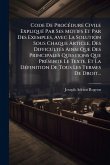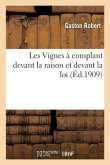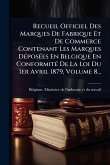Instruction Sur La Loi, Qui Détermine Les Causes, Le Mode Et Les Effets Du Divorce... by Léonard Robin, offers a detailed exploration of the legal framework governing divorce in France. This historical text delves into the causes, methods, and consequences of divorce as understood within the legal and social context of its time. Providing valuable insights into the evolution of family law, this book serves as a crucial resource for legal historians and anyone interested in the changing dynamics of marriage and divorce. It sheds light on the intersection of law, religion, and societal norms that shaped the understanding and practice of divorce in French society. Its historical significance ensures its enduring appeal to scholars and researchers alike. This work has been selected by scholars as being culturally important, and is part of the knowledge base of civilization as we know it. This work was reproduced from the original artifact, and remains as true to the original work as possible. Therefore, you will see the original copyright references, library stamps (as most of these works have been housed in our most important libraries around the world), and other notations in the work. This work is in the public domain in the United States of America, and possibly other nations. Within the United States, you may freely copy and distribute this work, as no entity (individual or corporate) has a copyright on the body of the work. As a reproduction of a historical artifact, this work may contain missing or blurred pages, poor pictures, errant marks, etc. Scholars believe, and we concur, that this work is important enough to be preserved, reproduced, and made generally available to the public. We appreciate your support of the preservation process, and thank you for being an important part of keeping this knowledge alive and relevant.
Bitte wählen Sie Ihr Anliegen aus.
Rechnungen
Retourenschein anfordern
Bestellstatus
Storno








![DÃ(c)bats Du Congrès PÃ(c)nitentiaire De Francfort Sur Le Main [1846] Et De Bruxelles [1847]... DÃ(c)bats Du Congrès PÃ(c)nitentiaire De Francfort Sur Le Main [1846] Et De Bruxelles [1847]...](https://bilder.buecher.de/produkte/74/74790/74790642m.jpg)